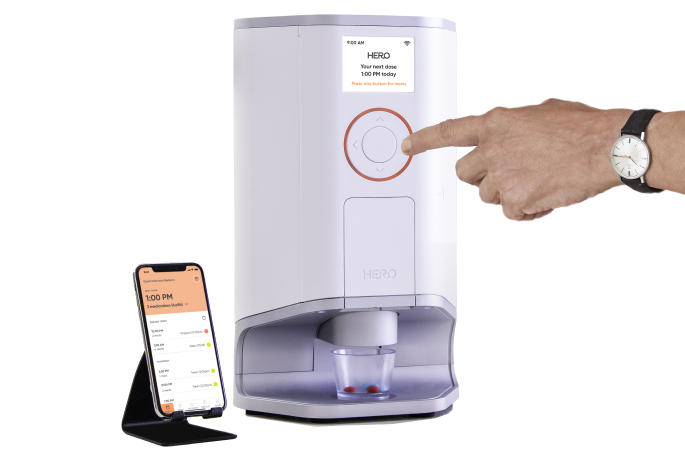When medication taking goes awry: the varied causes of medication nonadherence

Prescription drugs can improve one’s quality and quantity of life – so why do so many patients not take medications as instructed?
More than half of all Americans take prescription drugs, with 66% of seniors taking at least three medications.1 A patient who does not adhere to medical recommendations, regardless of the reason, is said to be nonadherent.
Research indicates that at least half of patients are nonadherent with medication, resulting in countless preventable health complications and at least $100 billion in excess costs to the healthcare system.3 Needless to say, this crisis frustrates health care providers, family members, and even the patient, who may fully intend to take medications faithfully, but fails to do so.
Sometimes, a drug proves to be ineffective for a particular patient, or causes a troublesome side effect, and it may be time for a change. Yet even when a medication is working effectively and is well tolerated, patients may skip doses or stop using a medication altogether. Let’s explore the reasons that underlie such decisions – some of which are easy to understand at times, while others prove to be more varied and complicated.
Medication cost as a barrier to adherence
One primary cause of medication nonadherence is the cost of prescription drugs. While drug prices continue to make headlines, the growing trend of out-of-pocket cost sharing is also an increasing concern. A typical medication copayment for patients with a Medicare prescription drug plan, for instance, is 25%. Many older Americans simply cannot afford to pay 25% of the price of an expensive drug.
Survey data clearly underscores the link between drug costs and adherence: nearly 1 in 3 adults have reported not taking medications as prescribed due to cost, including an estimated 2.2 million Americans with cardiovascular disease.4,5
Still, affordability is only one facet of medication nonadherence. The problem also occurs among patients who can afford their medications, as well as those who do not have large copayments. So, what other factors have been identified?
The challenge of prescription access
Another important cause of medication nonadherence is patients’ lack of access to prescription drugs. For those living in suburban locations where bustling pharmacies can be found on nearly every street corner, this problem may be harder to fathom. But for rural areas and lower-income neighborhoods, many pharmacies have recently closed due to financial pressures, leading to the emergence of so-called “pharmacy deserts'' across the United States. Barriers to access can also result from the administrative hurdles that exist in today’s healthcare system, such as needing to contact a prescriber to obtain a refill, or navigating an insurance company’s policies to approve a new medication. Patients who lack the time, capacity or will to overcome the “red tape” of our healthcare system may ultimately forgo getting or taking their meds altogether.
Cost and access are two fairly straightforward explanations for medication nonadherence. Now, let’s get into some of the more complex thought and behavioral patterns that may be at play in patients’ medication habits.
Digging deeper: patient-provider behavior and communication
Another area of focus in the study of nonadherence has centered around patient behavior.
Like exercising or flossing our teeth, medication taking is a routine behavior requiring practice and consistency. As such, examining patients’ routines can be informative when attempting to address medication nonadherence. For example, one person may find that on many nights, they climb into bed before taking a nightly medication. In this case, moving their pill bottle from the kitchen cabinet to their bedside table may result in fewer skipped doses.
Looking even deeper, psychologists have developed advanced models to explain human behavior, many of which arise from the notion that our beliefs and attitudes influence how we act in the world. For example, medication-taking behaviors can be influenced by a person’s beliefs about how their disease may threaten their health, or personal views about the effectiveness of their medication. Psychologists suggest that patients will adhere to a health provider’s recommendations when the patient has a realistic awareness of the health risks they face, and when the patient also believes that a medication will lower this risk.6 Other important determinants of behavior also include social norms, cultural influences, and a person’s confidence in their ability to remember to take medications.7
Furthermore, medication adherence can be influenced by patient-provider communication. Poor physician communication has been shown to increase nonadherence, while setting clear expectations about a new medication can enhance one’s medication-taking habits.8 In one study, for instance, when patients were told how long they would need to take a new antidepressant, and whom to contact with questions, they were more than 3 times more likely to adhere as compared with patients who did not receive this information.9
Why it all matters
As we’ve highlighted, there are an array of factors that can contribute to a person’s medication adherence. Beyond the reasons discussed above, nonadherence has also been associated with other factors, such as having a more complicated drug regimen, a lack of support, living alone, a lack of trust in health care providers, and dissatisfaction with the health care system overall.
Given all these possibilities, family caregivers, health providers, and even the patient may find it challenging to pinpoint the factors that most influence medication taking. And yet, there is , perhaps no other action that may offer as much promise in improving patient health. In fact, the World Health Organization has stated that “increasing the effectiveness of adherence interventions may have a far greater impact on the health of the population than any improvement in specific medical treatments.”10
While medication nonadherence can seem like a complex puzzle, solving it can lead to substantially improved health outcomes and, if maintained, a better quality of life.
About the Author
Stephen J. Kogut PhD MBA RPh is a pharmacist and professor at the University of Rhode Island College of Pharmacy, where he conducts research on medication adherence, prescription drug costs and patient health outcomes.
Sources
1. National Center for Health Statistics (US). Health, United States, 2019 [Internet]. Hyattsville (MD): National Center for Health Statistics (US); 2021. Trend Tables. Available from: https://www.ncbi.nlm.nih.gov/books/NBK569311/table/ch3.tab39/
2. Cutler, David, Angus Deaton, and Adriana Lleras-Muney. 2006. "The Determinants of Mortality." Journal of Economic Perspectives, 20 (3): 97-120. Available at: https://www.aeaweb.org/articles?id=10.1257/jep.20.3.97
3. Viswanathan M, Golin CE, Jones CD, Ashok M, Blalock SJ, Wines RC, Coker-Schwimmer EJ, Rosen DL, Sista P, Lohr KN. Interventions to improve adherence to self-administered medications for chronic diseases in the United States: a systematic review. Ann Intern Med. 2012 Dec 4;157(11):785-95. Available at: https://www.acpjournals.org/doi/full/10.7326/0003-4819-157-11-201212040-00538
4. Hamel L, Lopes L, Kirzinger A, Sparks G, Kearney A, et al. Public Opinion on Prescription Drugs and Their Prices. Published: Apr 05, 2022. Available at: https://www.kff.org/health-costs/poll-finding/public-opinion-on-prescription-drugs-and-their-prices/
5. Khera R, Valero-Elizondo J, Das SR, Virani SS, Kash BA, de Lemos JA, Krumholz HM, Nasir K. Cost-Related Medication Nonadherence in Adults With Atherosclerotic Cardiovascular Disease in the United States, 2013 to 2017. Circulation. 2019 Dec 17;140(25):2067-2075. Available at: https://pubmed.ncbi.nlm.nih.gov/31760784/
6. Boskey E. What Is the Health Belief Model? Verywell Mind. Available at: https://www.verywellmind.com/health-belief-model-3132721
7. Holmes EA, Hughes DA, Morrison VL. Predicting adherence to medications using health psychology theories: a systematic review of 20 years of empirical research. Value Health. 2014 Dec;17(8):863-76. Available at: https://pubmed.ncbi.nlm.nih.gov/25498782/
8. Zolnierek KB, Dimatteo MR. Physician communication and patient adherence to treatment: a meta-analysis. Med Care. 2009;47(8):826-834. Available at: https://www.ncbi.nlm.nih.gov/pmc/articles/PMC2728700/
9. Brown C, Battista D, Sereika S, et al. How can you improve antidepressant adherence? Journal of Family Practice, May 2007. Available at: https://www.mdedge.com/familymedicine/article/62681/mental-health/how-can-you-improve-antidepressant-adherence
10. Sabaté E, ed. Adherence to Long-Term Therapies: Evidence for Action. Geneva, Switzerland: World Health Organization; 2003. Available at: https://www.who.int/chp/knowledge/publications/adherence_full_report.pdf
Complex med schedule? We solved it.
Hero’s smart dispenser reminds you to take your meds and dispenses the right dose, at the right time.

The contents of the above article are for informational and educational purposes only. The article is not intended to be a substitute for professional medical advice, diagnosis, or treatment. Always seek the advice of your physician or other qualified clinician with any questions you may have regarding a medical condition or its treatment and do not disregard professional medical advice or delay seeking it because of information published by us. Hero is indicated for medication dispensing for general use and not for patients with any specific disease or condition. Any reference to specific conditions are for informational purposes only and are not indications for use of the device.



